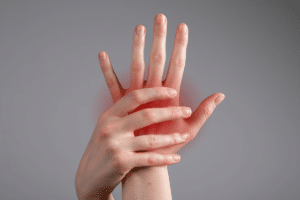Maritime workers are known for doing repetitive tasks, such as continuously using the same muscles and body parts to pull, push, and load. Because of these constant, repetitious motions, there are thousands of maritime workers who are in injured on the job each year. In many instances, the worker’s employer may be liable for these injuries. For example, these injuries may have been caused by unseaworthiness or improper training. In other instances, workers are forced to work long hours, further aggravating injuries.

What Defines Repetitive Use Injury for Maritime Workers?
Repetitive use injuries, also known as repetitive motion disorder (RMD) are afflictions that occur because of constant exertion and repeated motions during work. In maritime work, these injuries can be caused forceful labor, working in uncomfortable positions for long periods of time, vibrations, and continuous pulling and pushing. Regardless if the worker is a seaman, fish processor, or any other kind of maritime worker, the risk of repetitive use injuries is extremely high.
Unfortunately, repetitive use injuries are often difficult to diagnose and even more difficult to handle. In some instances, these types of injuries make it impossible for maritime workers to continue their work.
Types of Repetitive Use Injuries
Repetitive use injuries can cause a host of medical problems. Some injuries are so severe that they will require lifelong medical care, while other conditions are less serious. Common injuries include:
- Damaged joint
- Carpal Tunnel Syndrome
- Neck pain
- Rotator Cuff Syndrome
- Loss of hearing
- Nerve damage
- Tendinitis
- Bursitis
- Permanent soft tissue damage
- Swelling and redness in the affected area
- Numbness and tingling in and around the affected area.

According to the National Institute of Neurological Disorders and Stroke (NIH), repetitive use injuries most commonly affect the shoulders, elbows, and wrists. In other cases, it can affect the back, neck, hips, legs, feet, knees, and ankles.
Treatment for Repetitive Use Injuries
The first course of action in treatment is to immediately stop the work that’s causing the injuries. In many situations, however, workers are unaware of their injuries, but when the first sign of pain or swelling occurs, work should cease. Medical attention should be sought immediately to determine how severe the injuries are. In the meantime, NIH recommends placing cold ice on the affected area and taking over-the counter pain relievers. Be sure to speak with your physician beforehand, however, regarding these options.
Physicians may recommend physical therapy, steroid shots, and occupational therapy. The type of treatment will depend upon the severity of the injury. While most people will go on to heal eventually, others may have long-term health problems, as mentioned earlier.
Legal Resources for Maritime Workers
If repetitive use injuries were caused as a result of the negligence of a seaman’s employer, an unseaworthy vessel, or another responsible party, there are laws in place to protect workers. Under general maritime law and the Jones Act, seaman must be afforded safe working conditions on a seaworthy vessel. It’s important to remember to seek medical treatment immediately as well as report any injuries to your employer as soon as possible. Maritime laws have strict deadlines to file injuries in order to qualify for compensation.